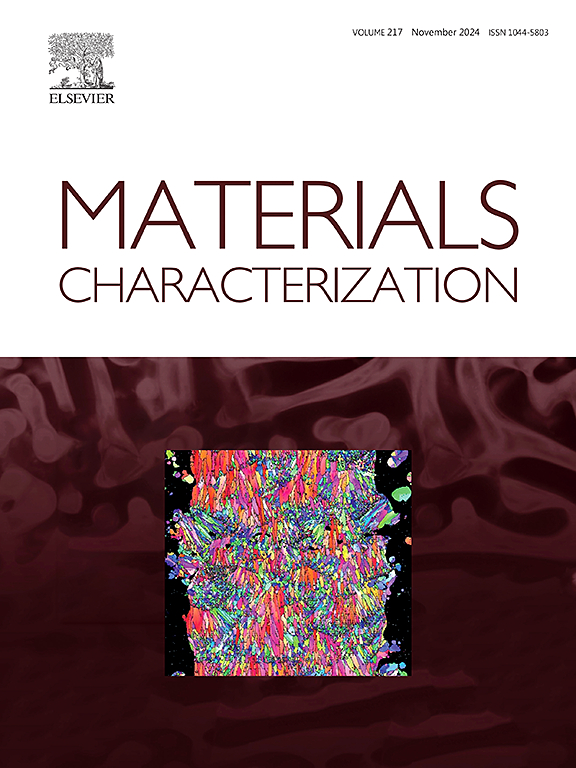Insight into the ablation behaviors and mechanism of duplex surface treated TC11 titanium alloy via dynamic shot peening and plasma nitriding
IF 4.8
2区 材料科学
Q1 MATERIALS SCIENCE, CHARACTERIZATION & TESTING
引用次数: 0
Abstract
Titanium alloys demonstrate exceptional mechanical properties and low density, positioning them as potential alternatives to gun steel. Nevertheless, the weak ablative resistance of titanium alloys limits their applications. To address the ablation issue of titanium alloys, an innovative duplex treatment combining shot peening and plasma nitriding was applied to TC11 titanium alloy. The effects of shot peening intensity on the structure, elemental distribution, hardness, and ablation resistance of the nitrided layer were investigated through X-ray diffraction, optical microscopy, surface profilometry, scanning electron microscopy, electron probe microanalysis, transmission electron microscopy, and Vickers microhardness test, respectively. The shot peening pretreatments produced various crystal defects. The defects promote the nitrogen diffusion and thus contribute to a thick and hard nitrided layer (including TiN and Ti2N phase), which act as a thermal protection shield. On the other hand, it is found that the defects provide aluminum diffusion paths, and forming an aluminum-rich zone, which produced protective Al2O3 coating during ablation process. The plasma nitrided TC11 with shot peening intensity pretreatment showed a 91 % reduction in mass ablation compared to untreated specimens, which provides a new clue for improving the ablation and impact resistance of titanium alloys.
求助全文
约1分钟内获得全文
求助全文
来源期刊

Materials Characterization
工程技术-材料科学:表征与测试
CiteScore
7.60
自引率
8.50%
发文量
746
审稿时长
36 days
期刊介绍:
Materials Characterization features original articles and state-of-the-art reviews on theoretical and practical aspects of the structure and behaviour of materials.
The Journal focuses on all characterization techniques, including all forms of microscopy (light, electron, acoustic, etc.,) and analysis (especially microanalysis and surface analytical techniques). Developments in both this wide range of techniques and their application to the quantification of the microstructure of materials are essential facets of the Journal.
The Journal provides the Materials Scientist/Engineer with up-to-date information on many types of materials with an underlying theme of explaining the behavior of materials using novel approaches. Materials covered by the journal include:
Metals & Alloys
Ceramics
Nanomaterials
Biomedical materials
Optical materials
Composites
Natural Materials.
 求助内容:
求助内容: 应助结果提醒方式:
应助结果提醒方式:


